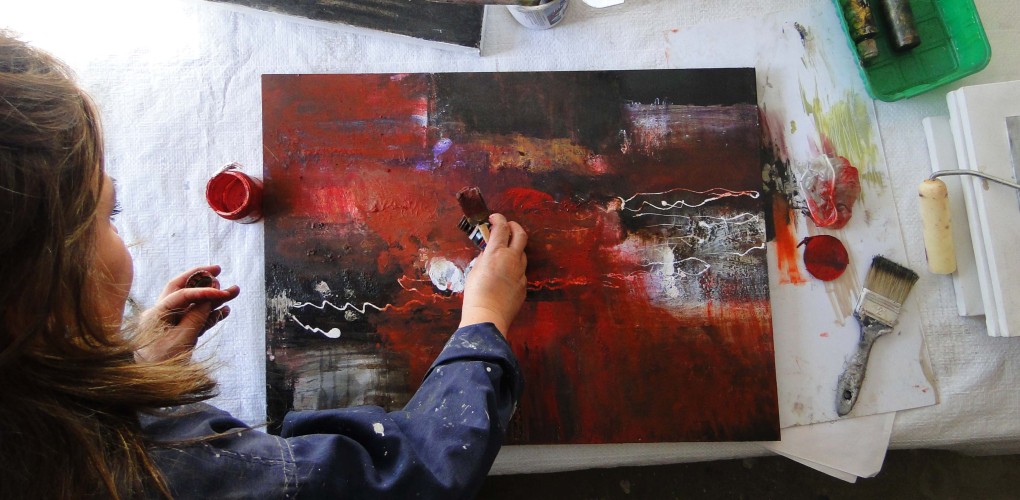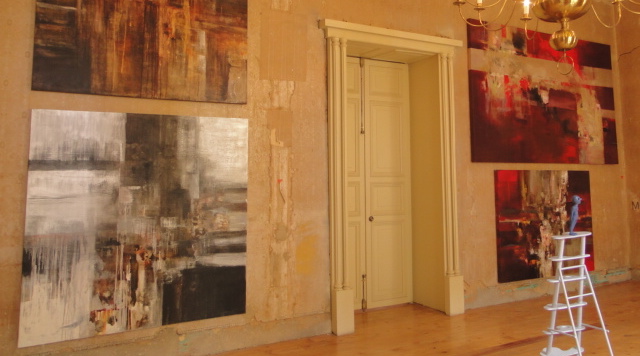Inside the Studio
 Marcela Ramirez-Aza
Marcela Ramirez-Aza
What are the major themes you pursue in your work?
In the beginning, my artwork had the intention to express in an aesthetically pleasant manner the nude human figure, and gradually it gained an introspective personality while becoming an abstract artwork. Today, my paintings are the pictorial expression of my own emotional conditions. Without a conceptual purpose or big pretentions, this profession led me to evacuate emotional conditions which, when expressed pictorially, don’t pretend to be understood rationally, but rather emotionally.
What was the best advice given to you as an artist?
In the words of Rainer Maria Rilke, “It’s all about conceiving and giving birth. Letting the impressions and feelings become mature and waiting with deep humility and patience the birth of a new lucidity, which means living artistically.” There is also a thought from OSHO, not only for artistic professions, but for life in general. I wish I could achieve this: “It doesn’t matter if you paint, if you sculpt, or if you make shoes; it doesn’t matter if you’re a gardener, a farmer, a fisherman, a carpenter. What matters is if you’re giving all your soul to your creation, since then your creative outcomes will have a divine quality.”
Prefer to work with music or in silence?
I definitely prefer silence. If I had to choose from musical styles, I would choose Baroque music.
If you could only have one piece of art in your life, what would it be?
From my artworks: Painting No.5 from the series Sortilegio. From other artist’s artworks: Marc Chagall’s Blue Violinist.
Who are your favorite writers?
I very much enjoy narrative literature and poetry. For me, it is a great joy to read Marguerite Yourcenar, the poet Rainer Maria Rilke, Jorge Luis Borges and, of course, the amazing Colombian writer Gabriel García Marquez.















